Technical Debt Management Made Easy with AI

Published on April 7, 2025
Introduction
You know things are off when a quick bug fix turns into an hours-long code archaeology
mission. The code works- but no one remembers how or why. That’s not just a sign of a messy
codebase. It’s technical debt showing up like an overdue bill.
For small development teams, especially in startups, this is a common pattern. You move fast,
prioritize features, and make trade-offs. Some shortcuts are necessary. But left unchecked, these
small choices add up-, and the long-term cost can stall your product’s growth.
This is where AI-powered test automation can play a real role- not just in speeding up testing but
in helping teams avoid falling into a technical debt trap.
Let’s get into what that actually looks like.
Understanding Technical Debt
Technical debt isn’t always a bad thing. It’s a tool- like financial debt- that can help you move faster in the short term. But, like real debt, it needs to be tracked and paid off deliberately.
What Technical Debt Looks Like
Take Stack Overflow’s early architecture as a case in point. In the Stack Overflow case study, the team made early decisions- like storing markdown in the database- that worked fine for a smaller user base. But as the platform scaled, these choices led to major challenges. Their codebase needed ongoing refactoring, and they had to rebuild parts from scratch to handle growth.
That’s the bill coming due.
Types of Technical Debt
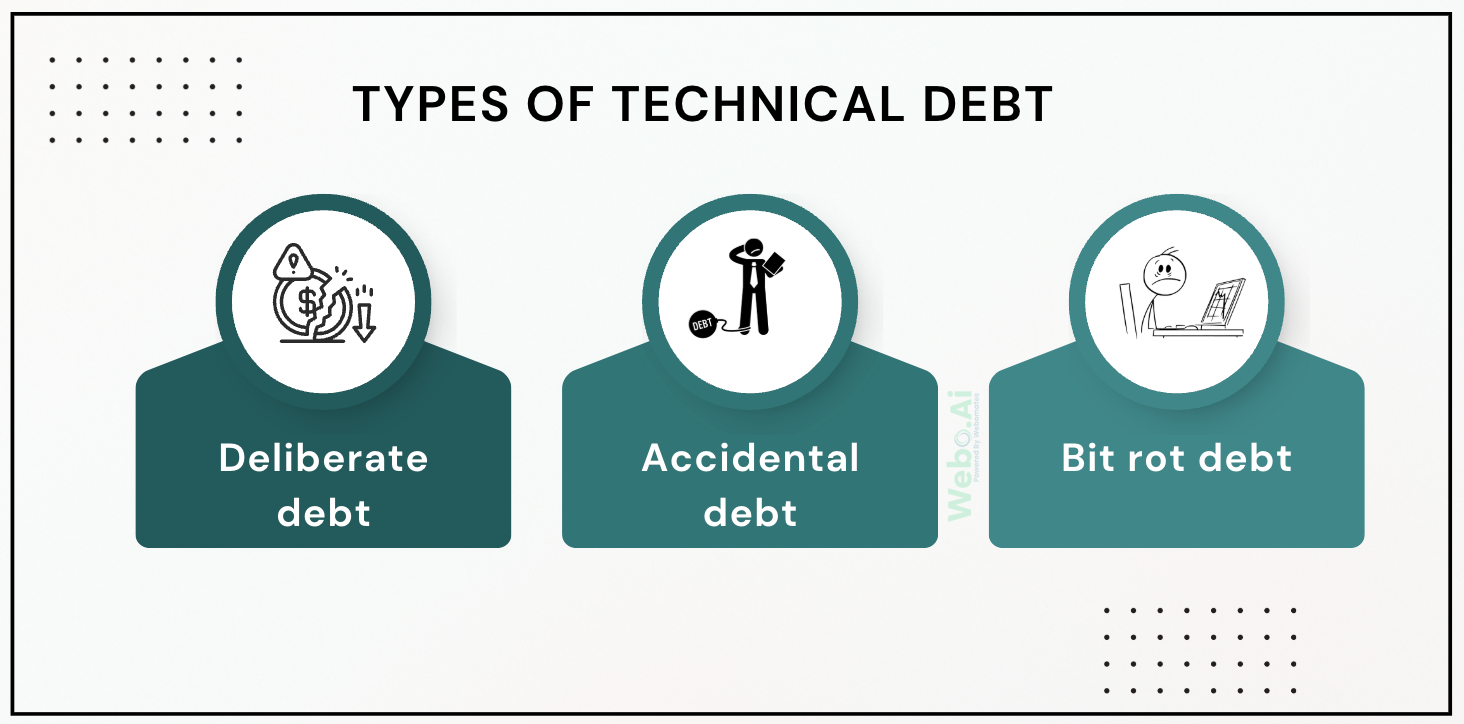
- Deliberate Debt: Quick-and-dirty fixes to meet a release deadline. You know it’s not ideal, but it works for now.
- Accidental Debt: Caused by a lack of experience, missing best practices, or unclear requirements. It sneaks up on you.
- Bit Rot Debt: Happens over time. Code becomes outdated, dependencies break, libraries get deprecated. Everything still works… until it doesn’t.
Why It Matters?
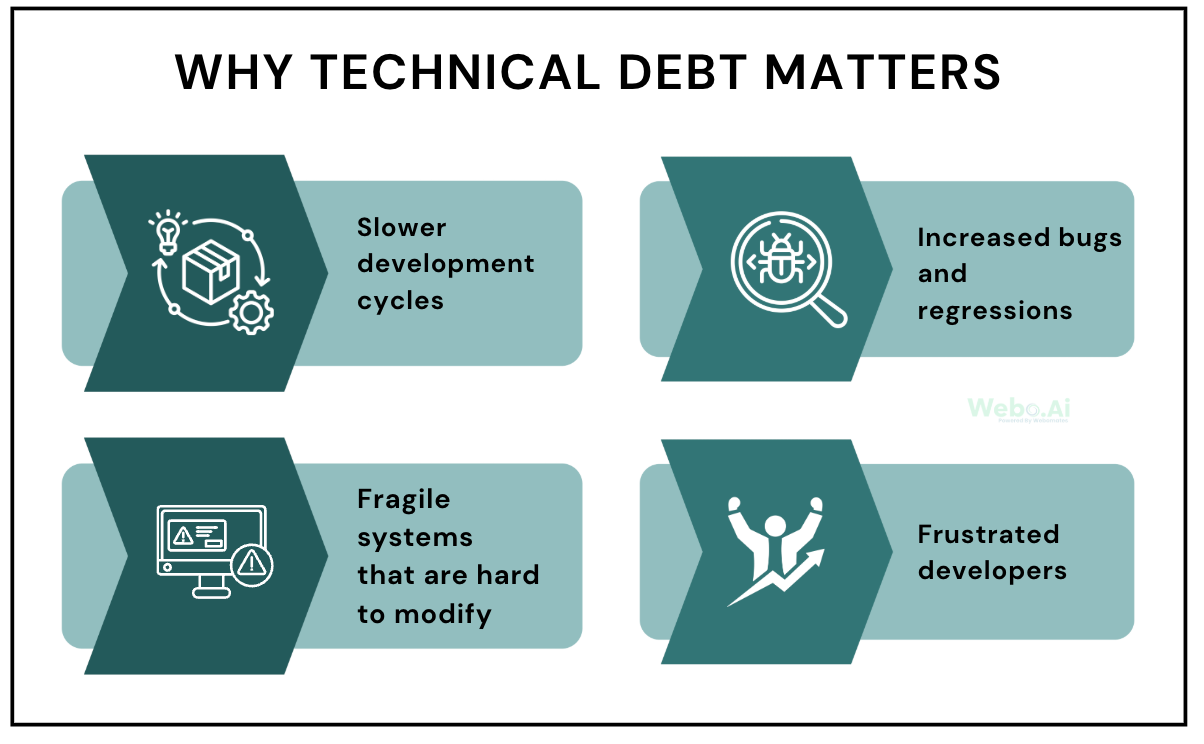
Unchecked Technical Debt Leads To:
- Slower development cycles
- Increased bugs and regressions
- Fragile systems
- Frustrated developers
For a small team, that can kill momentum.
Why do Small Teams Struggle with Technical Debt?
Startups and lean teams are built to move fast. But that speed comes with real constraints:
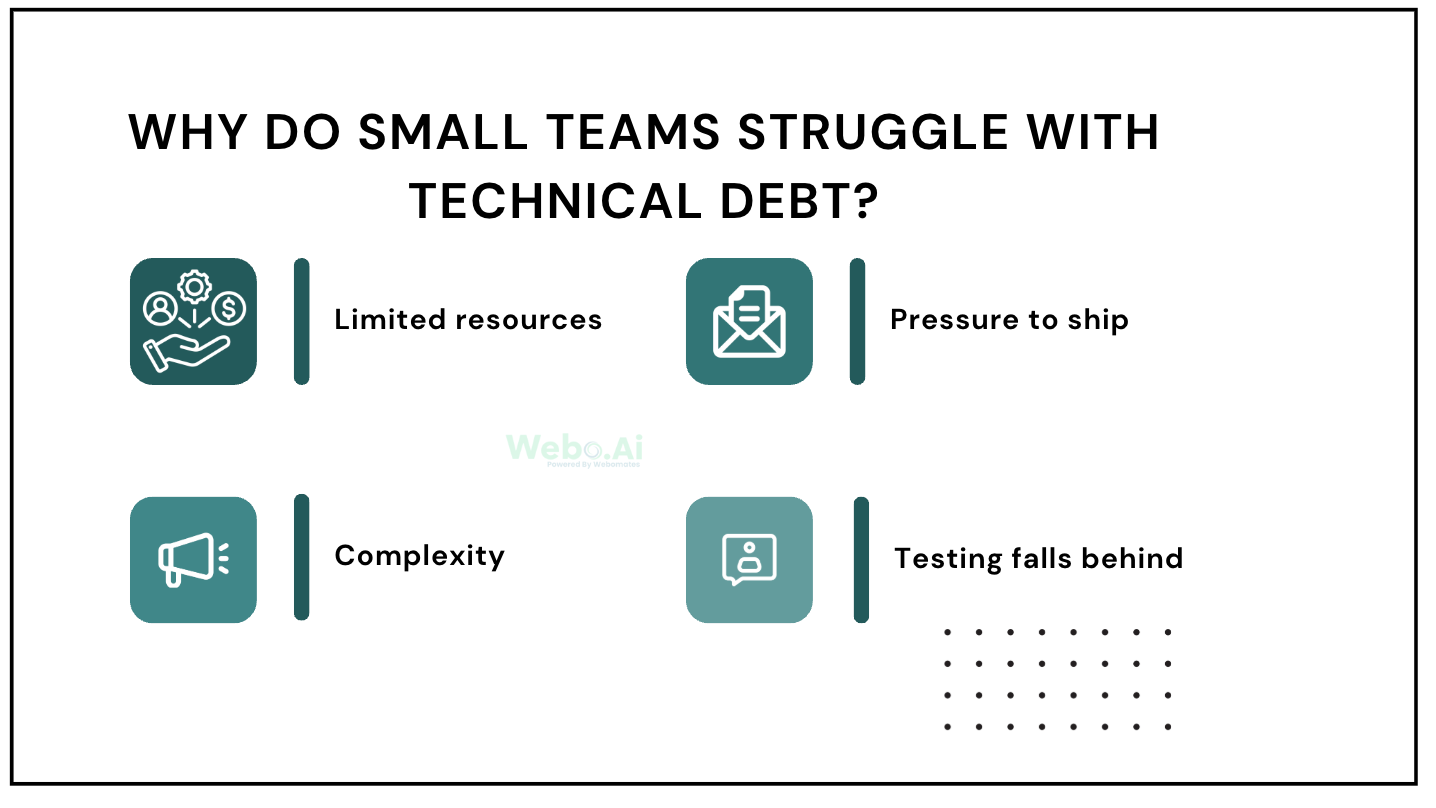
- Limited resources: No dedicated QA team. Developers write the code and test it.
- Pressure to ship: Features win customers. Clean code doesn’t sell—until it breaks.
- Complexity creeps in: As products grow, so do dependencies, edge cases, and potential breakpoints.
- Testing falls behind: Manual tests are tedious, often skipped, and usually incomplete.
The result? Bugs in production, rushed fixes, and growing tech debt.
How AI Test Automation Helps Reduce Technical Debt?
AI-driven test automation isn’t just about speeding up QA. Done right, it’s a long-term investment that pays down and prevents technical debt.
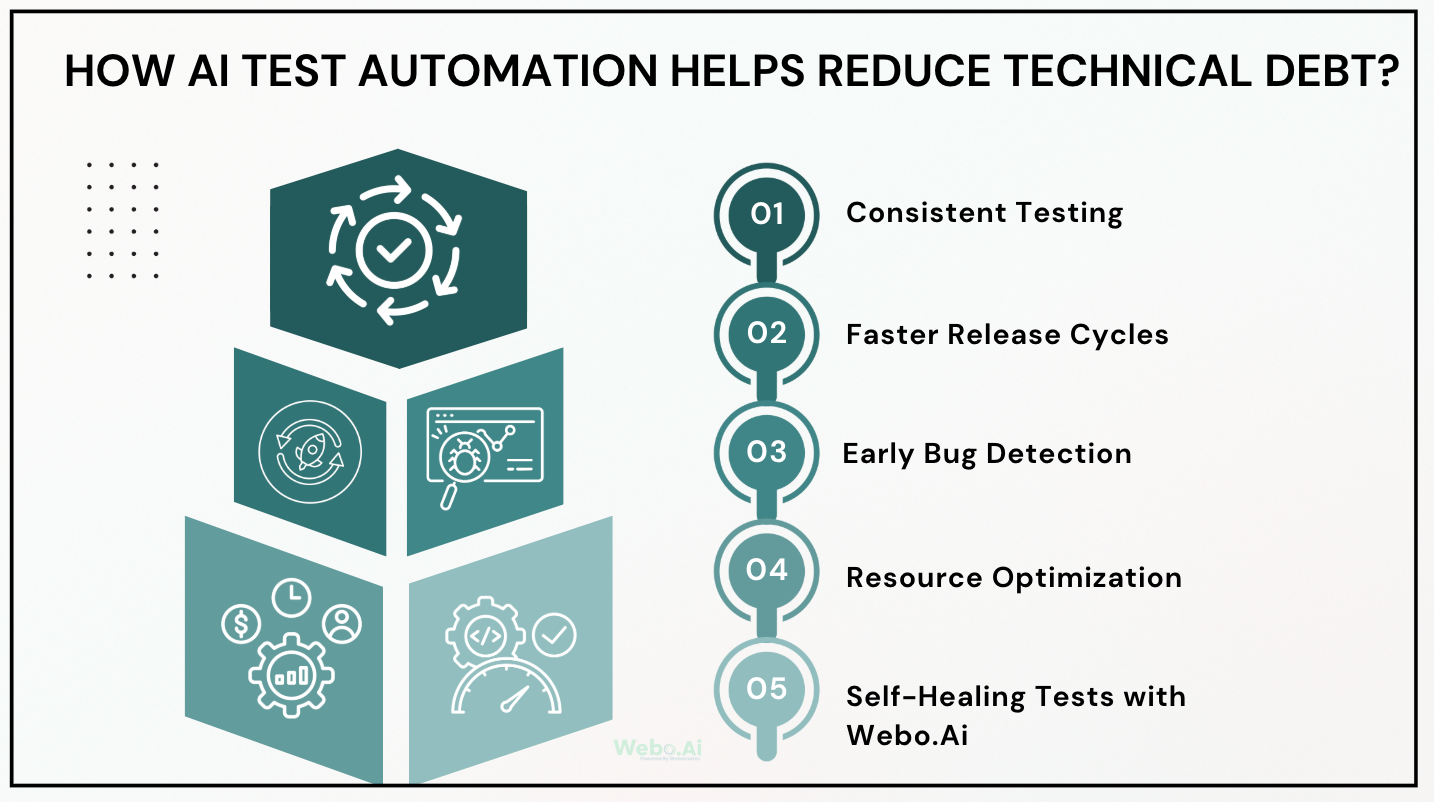
- Consistent Testing: AI tools ensure that every test is run the same way, every time. No skipped steps. No human error. This consistency makes tests reliable and actionable.
- Faster Release Cycles: Automated tests run in minutes, not hours. This means you can deploy faster and more confidently—without skipping quality checks.
- Early Bug Detection: AI can analyze patterns, detect anomalies, and flag potential issues before they cause real problems. Catching bugs early means less duct tape coding and fewer hotfixes.
- Resource Optimization: Instead of spending hours on manual regression tests, developers can focus on building features. The AI handles the repeatable, time-consuming parts.
- Self-Healing Tests with Webo.Ai: This is where things get interesting. Webo.Ai uses AI to create self-healing tests—automated tests that adapt to changes in the UI or structure of your app.
Let’s say a button ID changes. A normal test breaks. With Webo.Ai’s AiHealing and AiAutoheal, the system recognizes that the function is the same and updates the test automatically. No human intervention needed.
This isn’t just a time-saver- it prevents new technical debt from creeping in because your tests don’t decay as your product evolves.
Implementing AI Test Automation with Webo.Ai
So how do you actually start using Webo.Ai if you're a small team juggling ten things already?Webo.Ai is an AI-powered testing platform designed for lean development teams. It creates smart test scripts, adapts to changes, and integrates with CI/CD workflows.
Key Features
- Self-Healing Tests: With AiHealing and AiAutoheal, automated tests adapt to UI or structural changes.
- Visual Test Flow Builders: No-code setup for easy and intuitive test creation.
- Predictive Issue Detection: AI analyzes usage patterns to detect potential issues before they occur.
- CI/CD Pipeline Integration: Seamlessly integrates with GitHub, GitLab, Jenkins, and other DevOps tools.
Step-by-Step Integration for Startups
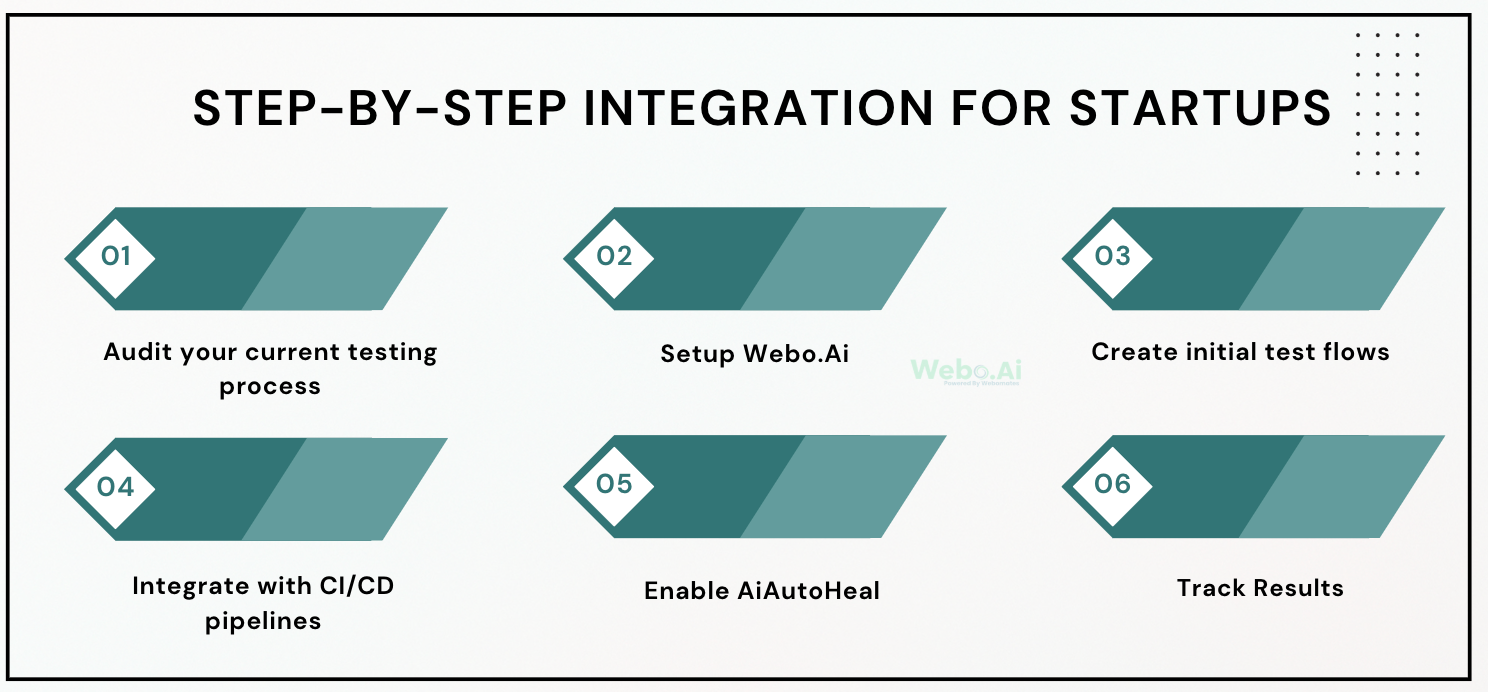
- Audit your current testing process: Identify what’s manual, what’s flaky, and start there.
- Set up Webo.Ai: The UI is built to be dev-friendly—no separate QA team needed.
- Create initial test flows: Use the visual builder or script mode, depending on your preference.
- Integrate with your CI/CD pipeline: Set up automatic test runs on every push or pull request.
- Enable AiAutoheal: Let the system adapt tests as your app changes.
- Track results and refine: Use Webo.Ai's dashboard to spot trends, track coverage, and optimize.
In less than a sprint, you can have a basic setup that already saves time- and scales as you grow.
Best Practices for Managing Technical Debt
Technical debt management is about being proactive rather than reactive. Here’s how you stay ahead of it- practically, not just in theory.
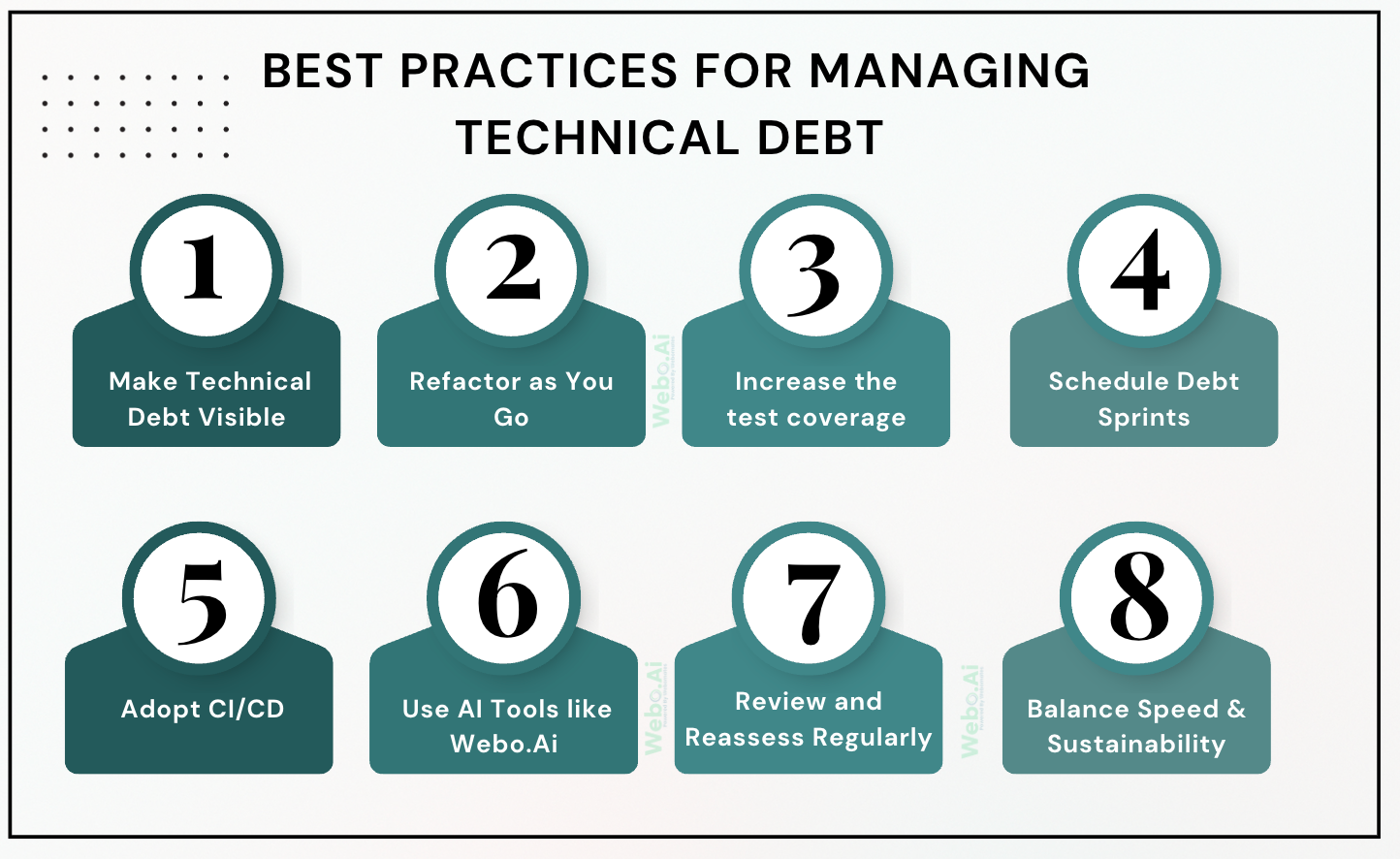
- Make Technical Debt Visible: You can’t fix what you don’t track. Treat
technical debt like bugs or feature requests.
- Create tickets for debt items: “Refactor payment handler to use shared validation library” is just as important as “Add Apple Pay support.”
- Use labels in your task tracker: Tag issues as tech-debt, so they’re easy to find and prioritize.
- Document trade-offs: If you knowingly take on debt for speed, write it down. Context gets lost fast.
Visibility turns technical debt into a conversation, not a hidden problem.
- Refactor as You Go: Big-bang rewrites are expensive and often unnecessary.
- Apply the Boy Scout Rule: Always leave the codebase a little better than you found it.
- Refactor in small chunks as part of feature work.
- Use linters and code quality tools to enforce consistency.
Small, continuous improvements add up—and don’t disrupt your roadmap.
- Invest in Tests First: Test coverage isn’t just a metric. It’s your safety net.
- Prioritize writing tests for critical paths (auth, payments, data processing).
- Use AI test automation to cover repetitive UI flows.
- Don’t write fragile tests. Tests that break constantly just create test debt.
A stable test suite helps you refactor with confidence and catch regressions before they hit production.
- Schedule Debt Sprints or “Fix Weeks”: Sometimes you need to stop shipping
features and just clean up.
- Schedule dedicated sprints for paying down debt.
- Or rotate a developer each sprint to act as a "debt custodian."
- Use metrics to prioritize—e.g., files with the most changes and most bugs.
Make time for debt, or it will make time for you (usually at 2 a.m. after a release).
- Adopt CI/CD to Reduce Lag and Risk: Deploying once a week or once a month
builds up integration risk.
- Automate builds and tests.
- Deploy in small batches.
- Use feature flags to decouple releases from feature availability.
This reduces the pressure to rush fixes into production and lowers the cost of failure.
- Use AI Tools to Reduce Maintenance Burden: AI isn’t just a buzzword—it’s useful
when it reduces repetitive work.
- Tools like Webo.Ai reduce test flakiness by self-healing tests.
- AI can flag unused code or risky code changes based on patterns.
- Predictive alerts can warn of areas likely to break due to recent changes.
This kind of automation is critical for small teams without a large QA or DevOps staff.
- Review and Reassess Regularly: Debt isn’t static. Some debt becomes irrelevant.
Some becomes urgent.
- Hold quarterly architecture reviews or “debt check-ins.”
- Ask: What’s slowing us down? Where are we fragile?
- Review past bugs and see if better structure or tests could’ve prevented them.
Think of this like a financial audit. You’re asking: where’s the risk, and how do we lower it?
- Balance Speed and Sustainability: Sometimes it’s right to take on debt—but do
it deliberately.
- Deliberate + Prudent: Strategic shortcut. Acceptable.
- Deliberate + Reckless: Rushed and risky. Avoid.
- Inadvertent + Prudent: Fix once you learn more.
- Inadvertent + Reckless: Fire hazard. Stop doing this.
It’s not about zero debt—it’s about manageable, well-understood debt.
Conclusion
Technical debt isn’t just a dev problem- it’s a business risk. For small teams, the line between agility and instability is thin. The right tools can help you move fast without breaking things.
Webo.Ai gives startups the ability to scale confidently by keeping tests healthy, releases fast, and codebases under control.
If you’re a lean team looking to stay lean without sacrificing quality, Webo.Ai is worth a serious look.
Ready to reduce your tech debt with AI? Check out free trial here.
